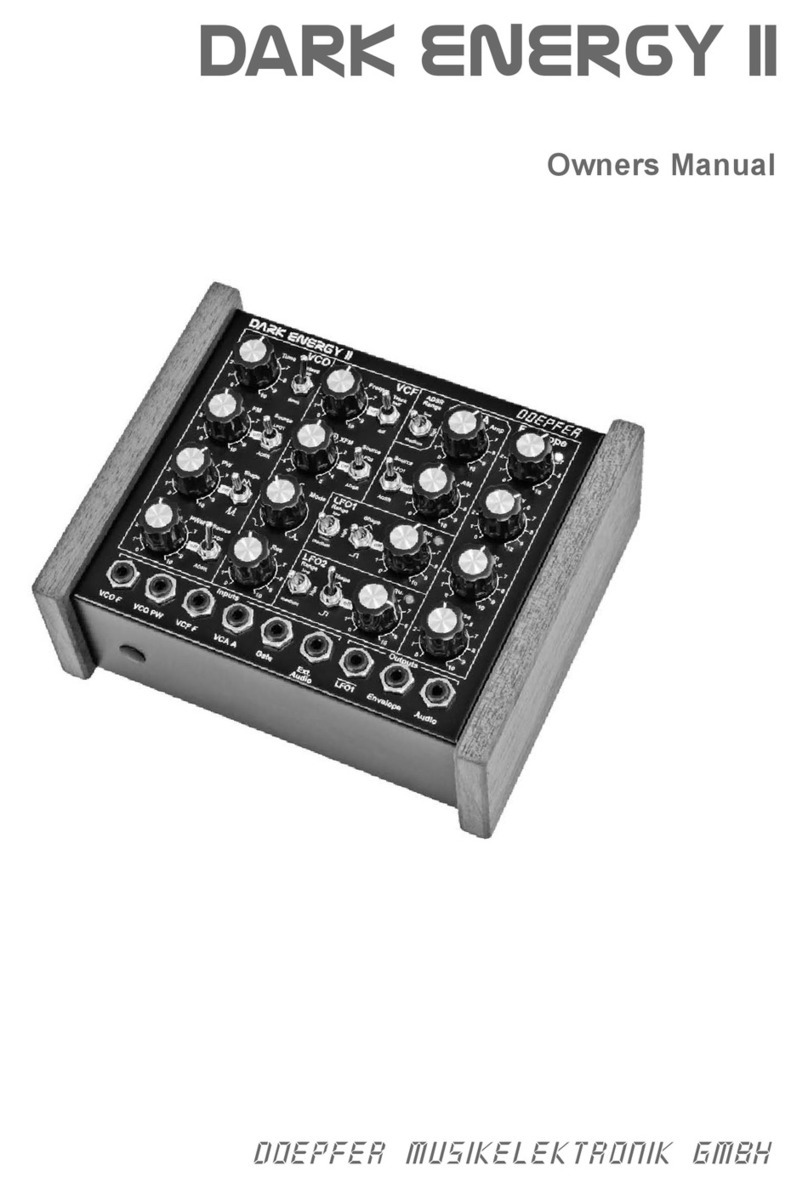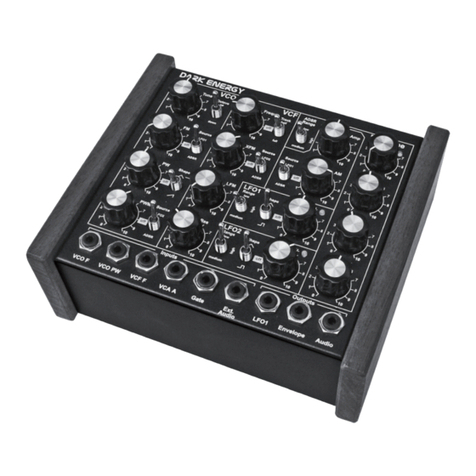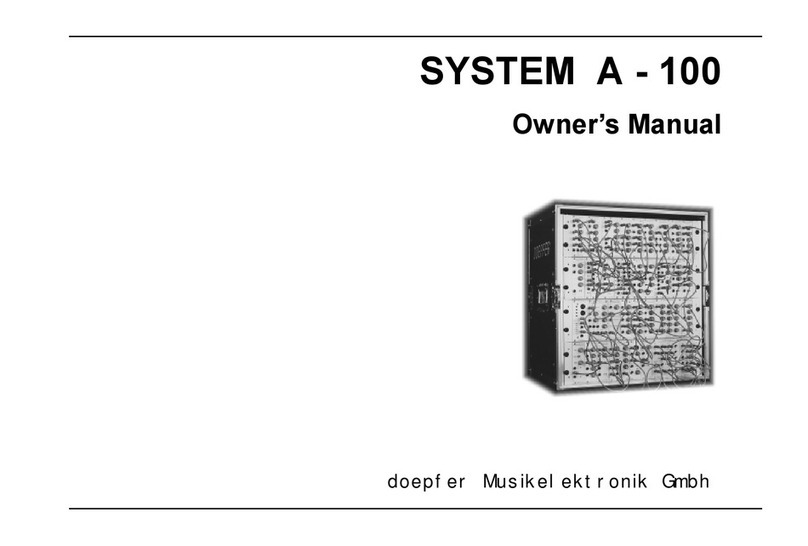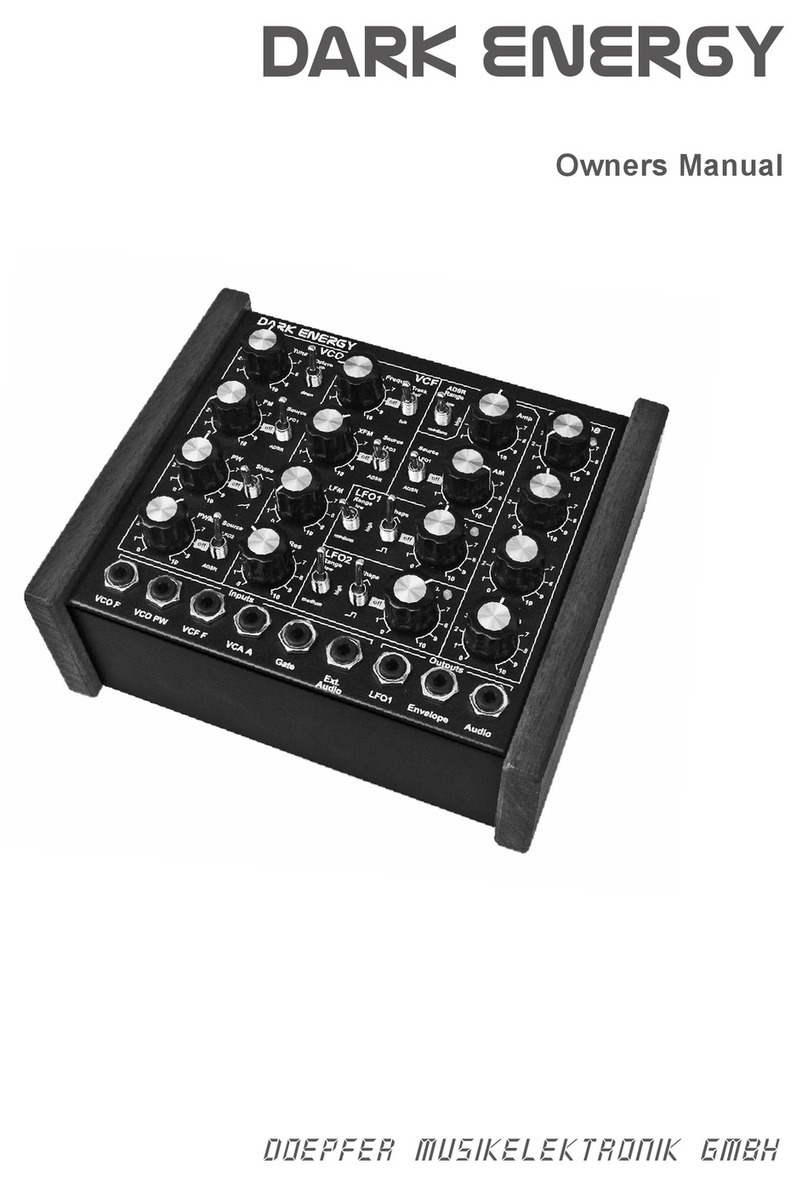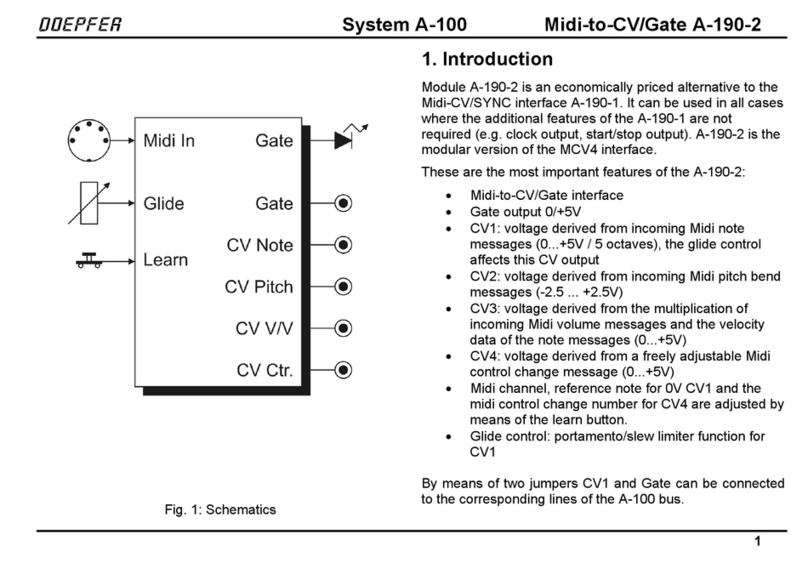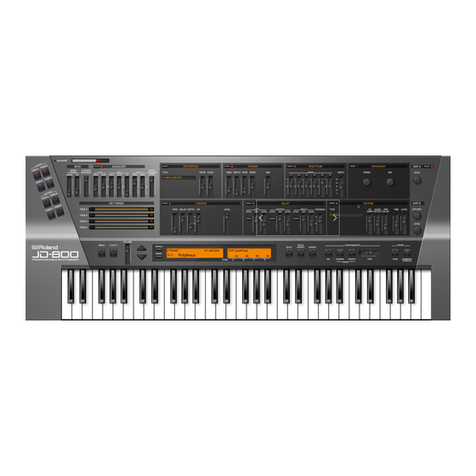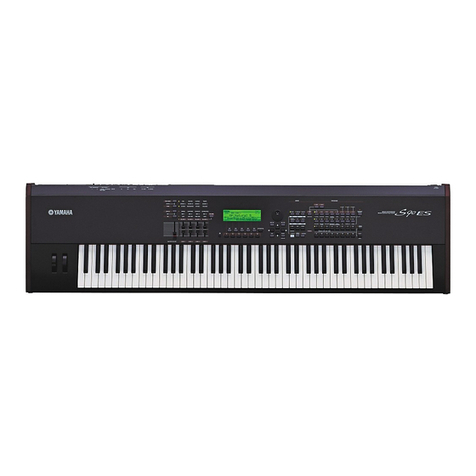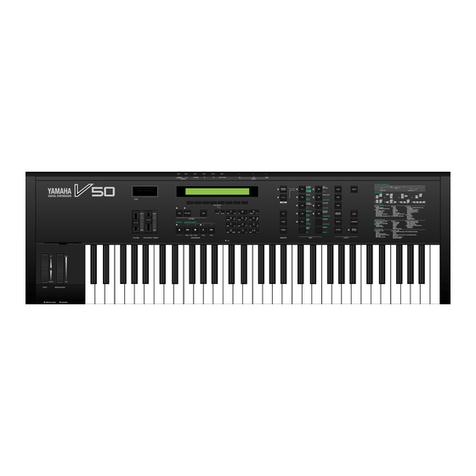
ment in a humid or wet environment nor near
inflammables.
• Do not use this instrument in damp environments,
or close to water.
• No liquids or conducting materials must get into the
instrument. If this should happen the instrument
must be disconnected from power immediately and
be examined, cleaned and eventually be repaired
by a qualified person
• Do not use this instrument in close proximity to heat
sources such as radiators or ovens. Don’t leave it
in direct sunlight.
• This instrument must be assembled or installed in a
19” rack in a way that guarantees sufficient ventila-
tion and air circulation.
• The instrument must not be exposed to temperatu-
res above 50°C or below -10 °C. In use, the
instrument must be at a minimum temperature of
10 °C.
• Keep the top side of the instrument free in order to
guarantee proper ventilation, otherwise the instru-
ment could be overheated. Never place heavy ob-
jects on the instrument.
• This instrument can, without any external amplifica-
tion or in combination with a headphone or speaker
amplifier, produce sound levels which can damage
your hearing. Don’t work at high sound levels for
prolonged periods of time, and don’t ever use levels
which cause discomfort.
• The instrument’s mains power supply lead should
be disconnected if it is not used for any substantial
period. If there is any damage the cables must be
repaired or replaced by an authorized person
• Do not tread on the mains supply lead.
• In disconnecting the lead, pull the plug, not the
cable.
• If this instrument is connected to others, check in
their manuals for connection instructions.
• Make particularly sure that no object falls into the
instrument, and that no liquid gets into it.
• Transport the instrument carefully, never let it fall or
overturn. Make sure that during transport and in use
the instrument has a proper stand and does not fall,
slip or turn over because persons could be injured
• The instrument must be checked and serviced by a
qualified technician in the following cases:
a. the power supply lead or connector is damaged
in any way,
b. an object or fluid has somehow got into the
instrument,
c. the instrument was exposed to rain,
d. the instrument stops working properly or starts
to behave erratically,
e. the instrument is knocked over or dropped and/
or its case is damaged.
• As stated above, there are no user-serviceable
parts in the instrument. Refer all repairs to qualified
service personnel.
doepfer System A - 100 Important safety notes
iii

